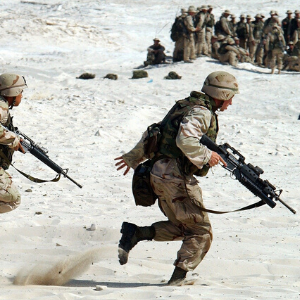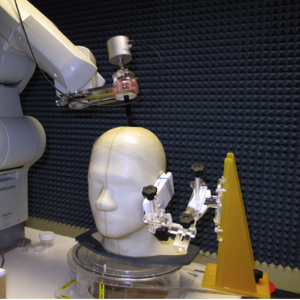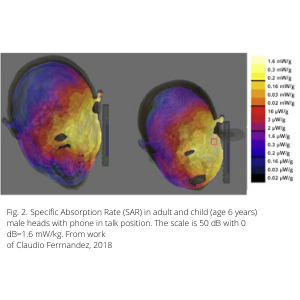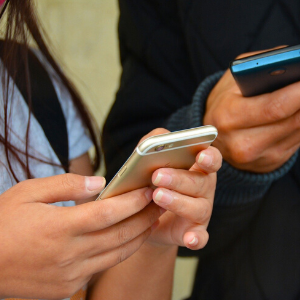Myth: Government cell phone and wireless safety standards protect us. (source: EHT Trust)
Fact: The USA does not have federally developed safety standards for wireless radiation.
The EPA, FDA and the CDC did not study the long-term health effects, and did not issue a report and make recommendations for a safe level.
No! The EPA was defunded.
Instead of safety limits developed by US health agencies, industry pressure and government loopholes resulted in the USA adopting guidelines that were developed decades ago for military men, not children, not people with smaller heads.
Here are some reasons why FCC and ICNIRP limits do not protect us- especially children.

Short Term Exposures
The cell phone and cell tower radiation limits we have today were developed years ago so the military personnel could use radar.
Wireless technology was not widespread like it is today.
Wireless is microwave radiation.
Clearly, just a few seconds of microwave radiation at a high level can cook.
Current US and ICNIRP guidelines are based on research that found microwaves used for communication at high intensities caused burns and tissue damage.
Current guidelines are basically based on the premise that if the radiation level does not burn or cook tissue in 6 or 30 minutes, it is considered a safe level.
Do you know anyone who uses Wi-Fi for only 30 minutes per day?
(Note: Some limits use 6 minutes and some 30.)

Heating Only
The guidelines are based only on preventing heating (thermal) effects, like what would happen if you stuck your head in a microwave oven.
You would burn.
Guidelines do not consider that low-level microwave radiation (non-thermal) might harm our brains, cells and tissues when our bodies are continuously exposed day after day.
However, research clearly shows that non-heating, or what is called non-thermal radiation levels do impact our bodies.

Large Military Men
Considering that FCC and ICNIRP guidelines were first developed in the 1960s for the military, you can imagine how it came to be that military men were envisioned as who would experience the exposure.
Indeed, the model used to test cell phone radiation is based on representing a man over 220 pounds. The model name is SAM.
Children are much smaller than 220 pounds and the smaller size of their heads and bodies were not considered.
Research now shows that children absorb up to ten times more radiation into their bone marrow than adults do because of children's thinner skulls and smaller bodies.

SAM: The Big Plastic Head
Official cell phone radiation tests use a plastic head filled with liquid to represent our brains. This large adult male plastic head is called the Specific Anthropomorphic Mannequin or SAM. Many experts, including the American Academy of Pediatrics, state the way we test phones must be updated.
There are many problems with SAM, a big plastic head filled with special liquid. Unlike SAM, our brains are lumpy and have all sorts of twists, turns and thicknesses of tissue in them. Electricity will travel differently through a vat of liquid compared to a real brain with these different tissue densities.
Research from the Proceedings for the National Academy of Sciences details how cell phone radiation can create tiny hot spots within brain tissue of a mammal. Hotspots are not good for our brains.

Developing Brains
FCC and ICNIRP limits do not account for how wireless will impact the developing brains of children and babies.
Children's cells are rapidly developing and can be more affected, as research has found.
The American Academy of Pediatrics states FCC guidelines do not protect children!
They called on the FCC to improve safety limits in 2013, stating current FCC standards do not account for the unique vulnerability and use patterns specific to pregnant women and children.
It is essential that any new standard for cell phones or other wireless devices be based on protecting the youngest and most vulnerable populations to ensure they are safeguarded throughout their lifetimes.

One Device Only
FCC and ICNIRP guidelines for cell phone radiation tests do not consider the cumulative effects of radiation that penetrates into a person from multiple tech devices in one place.
The way the pre-market rules are set up for cell phones and other wireless devices, they only consider one device at a time.
This made sense decades ago as each soldier only had one radar!
Ten years ago each person had just one wireless device, a cell phone. Now families have dozens of wireless devices in every home.
If a child carries a cell phone in a pocket all day, sits under Wi-Fi routers at school with a laptop in the lap all day next to a window overlooking the school cell tower on their playing field, what is this child's total exposure?
Consider the office worker next to a wireless printer with a wireless headset all day on a wireless computer.
What will the health effects be?
Government pre-market cell phone radiation tests do not consider such scenarios.
Fact: The USA does not have federally developed safety standards for wireless radiation.
The EPA, FDA and the CDC did not study the long-term health effects, and did not issue a report and make recommendations for a safe level.
No! The EPA was defunded.
Instead of safety limits developed by US health agencies, industry pressure and government loopholes resulted in the USA adopting guidelines that were developed decades ago for military men, not children, not people with smaller heads.
Here are some reasons why FCC and ICNIRP limits do not protect us- especially children.

Short Term Exposures
The cell phone and cell tower radiation limits we have today were developed years ago so the military personnel could use radar.
Wireless technology was not widespread like it is today.
Wireless is microwave radiation.
Clearly, just a few seconds of microwave radiation at a high level can cook.
Current US and ICNIRP guidelines are based on research that found microwaves used for communication at high intensities caused burns and tissue damage.
Current guidelines are basically based on the premise that if the radiation level does not burn or cook tissue in 6 or 30 minutes, it is considered a safe level.
Do you know anyone who uses Wi-Fi for only 30 minutes per day?
(Note: Some limits use 6 minutes and some 30.)

Heating Only
The guidelines are based only on preventing heating (thermal) effects, like what would happen if you stuck your head in a microwave oven.
You would burn.
Guidelines do not consider that low-level microwave radiation (non-thermal) might harm our brains, cells and tissues when our bodies are continuously exposed day after day.
However, research clearly shows that non-heating, or what is called non-thermal radiation levels do impact our bodies.

Large Military Men
Considering that FCC and ICNIRP guidelines were first developed in the 1960s for the military, you can imagine how it came to be that military men were envisioned as who would experience the exposure.
Indeed, the model used to test cell phone radiation is based on representing a man over 220 pounds. The model name is SAM.
Children are much smaller than 220 pounds and the smaller size of their heads and bodies were not considered.
Research now shows that children absorb up to ten times more radiation into their bone marrow than adults do because of children's thinner skulls and smaller bodies.

SAM: The Big Plastic Head
Official cell phone radiation tests use a plastic head filled with liquid to represent our brains. This large adult male plastic head is called the Specific Anthropomorphic Mannequin or SAM. Many experts, including the American Academy of Pediatrics, state the way we test phones must be updated.
There are many problems with SAM, a big plastic head filled with special liquid. Unlike SAM, our brains are lumpy and have all sorts of twists, turns and thicknesses of tissue in them. Electricity will travel differently through a vat of liquid compared to a real brain with these different tissue densities.
Research from the Proceedings for the National Academy of Sciences details how cell phone radiation can create tiny hot spots within brain tissue of a mammal. Hotspots are not good for our brains.

Developing Brains
FCC and ICNIRP limits do not account for how wireless will impact the developing brains of children and babies.
Children's cells are rapidly developing and can be more affected, as research has found.
The American Academy of Pediatrics states FCC guidelines do not protect children!
They called on the FCC to improve safety limits in 2013, stating current FCC standards do not account for the unique vulnerability and use patterns specific to pregnant women and children.
It is essential that any new standard for cell phones or other wireless devices be based on protecting the youngest and most vulnerable populations to ensure they are safeguarded throughout their lifetimes.

One Device Only
FCC and ICNIRP guidelines for cell phone radiation tests do not consider the cumulative effects of radiation that penetrates into a person from multiple tech devices in one place.
The way the pre-market rules are set up for cell phones and other wireless devices, they only consider one device at a time.
This made sense decades ago as each soldier only had one radar!
Ten years ago each person had just one wireless device, a cell phone. Now families have dozens of wireless devices in every home.
If a child carries a cell phone in a pocket all day, sits under Wi-Fi routers at school with a laptop in the lap all day next to a window overlooking the school cell tower on their playing field, what is this child's total exposure?
Consider the office worker next to a wireless printer with a wireless headset all day on a wireless computer.
What will the health effects be?
Government pre-market cell phone radiation tests do not consider such scenarios.
Last edited: